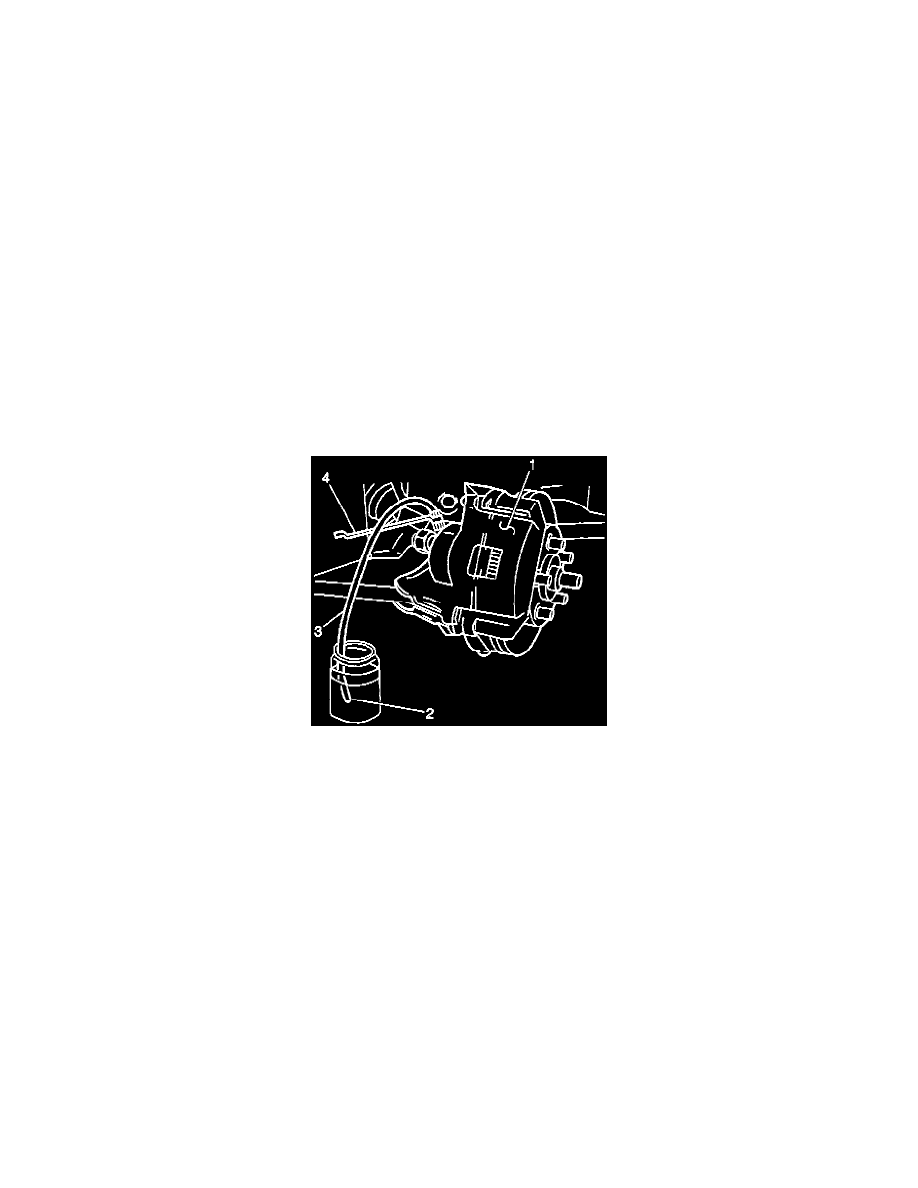Regal V6-3.8L SC VIN 1 (1998)

IMPORTANT: Use a shop cloth to catch escaping brake fluid. Take care to prevent fluid from running down the motor pack base or into the
electrical connector. also do not allow the brake fluid to contact any painted surfaces as surface damage will occur. If the brake fluid does contact
any surface, flush the surface with water to lessen the damage
8.6. Repeat the previous four steps until no air bubbles are present.
8.7. Relocate the bleeder hose on the left side of the traction control module bleeder valve.
8.8 Submerge the opposite hose end in a clean container partially filled with clean brake fluid.
8.9. Slowly open the bleeder valve. Allow the fluid to flow until no air is seen in the fluid.
8.10. Close the valve when the fluid flows without any air bubbles.
8.11. Repeat the previous four steps until no air bubbles are present.
NOTICE: Refer to Fastener Notice in Service Precautions.
^
Tighten the traction control module bleeder valves to 9 Nm (80 inch lbs).
^
Tighten the traction control module bolt to bracket to 3 Nm (27 inch lbs).
9. Bleed the traction control module brake pipe connections using pressure bleeding equipment that is connected and pressurized.
9.1. Slowly open the right side brake pipe tube nut on the traction control module. Inspect for air in the escaping fluid.
9.2. When the air flow ceases, immediately tighten the tube nut.
^
Tighten the tube nut to modulator 24 Nm (18 ft lbs).
9.3. Moving from right to left, repeat the previous two steps for the remaining three brake pipe connections.
10. Raise and suitably support the vehicle.
11. Use the following bleed sequence to bleed the system.
^
Right rear
^
Left front
^
Left rear
^
Right front
12. Bleed the wheel brakes in the sequence shown above:
IMPORTANT: Ensure that the bleeder valves do not leak. Complete the following steps in order to bleed the brakes:
12.1. Attach a clear plastic bleeder hose (3) to the bleeder valve at the wheel.
12.2. Submerge the opposite hose end in a clean container (2) partially filled with clean brake fluid.
12.3. Slowly open the bleeder valve and allow the fluid to flow.
12.4. Close the valve when the fluid begins to flow without any air bubbles. Tap lightly on the caliper (1) or backing plate in order to dislodge any
trapped air bubbles.
^
Tighten the front caliper bleeder valves to 13 Nm (115 inch lbs).
^
Tighten rear caliper bleeder valves to 7 Nm (62 inch lbs)
.
^
Tighten the rear wheel cylinder bleeder valves to 7 Nm (62 inch lbs).
13. Remove the pressure bleeding equipment, including the J 35589.
14. Lower the vehicle.
